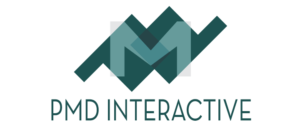The Blog Checklist – Part II of III
You’ve resolved to start blogging (it helps improve your SEO, of course), but what’s next? After reading our Part I on the subject of planning the blog, in this part you’ll learn about writing the blog.
Writing
- Frequency
No matter your schedule, the important thing is to blog consistently. Start off with a Once-A-Month blog if you’re not used to blogging. Once-A-Week is better. Once-A-Day is best. The point of frequently publishing blog content is to create an online presence; your content will spread throughout the web, and could, therefore, be found by people searching. - Length
If you’re new to blogging, 100 words on a regular basis is a good start. 300 is better. If you blog more than once a month, you can vary between 100 to 300 words per post. A trick is to spend one day and write 1,000 words. Then divide that up into multiple blog posts: at 100 words per post, you have 10 months of content. At 200 words per post, you have 5 months of content, and so on. - Title
Try for a short, memorable, and direct Title. Think in terms of content that people need and want to read: My Review on the Toshiba t75: A Winner. The reason to pick a reasonably short title is because the search engines cut your title length in their results page, which looks awkward. You want a direct title (in which the most important words are near the beginning), is for that same reason. - Description
In about 150 characters, you should be able to explain what your post is about to people who come across it in a search results page. Entice them to click and read. In a search engine page full of results, you only have moments to make a good impression. Take the time to craft a good description that puts your best foot forward. - Images
Choose images that relate to the topic. Use your own original images, or appropriate stock images (or royalty-free images, or public domain images). Visit http://pixabay.com for some. On a technical level, make sure your filenames are meaningful, and you’ve added Alt text to each. Alt text is important for Accessiblity, that is, that your content is accessible to all users, even those that are blind. The text is a short description of the image, and the search engines value it. - Headings
Take advantage of Heading 1, Heading 2, and etc. They are useful for breaking up a wall of text into readable sections, and help the search engines understand you content. Nowadays, people don’t read in large chunks (especially on web sites); they skim content until something catches their eye. Then they might stop actually read more in-depth. You probably did that very thing in this blog! - Lists
Either bullet point or numbered lists are useful because they create bite-sized pieces of content that people can consume easier. Your Title might derive from the type of list you’ve written: The Top 3 Best WordPress Tutorials. This very blog post follows that convention. People love to read one such blog, and then another, and another. The actual number of the list does not matter, however. - Links
A relevant internal link to your own blog posts (on your own site) is helpful for keeping people on your site longer. A link to an external site(to someone else’s blog) is helpful when trying to get backlinks. When setting external links, remember to make them open in their own tab. Keeping people on your site longer helps them complete your conversion goal (a subscription, phone call, inquiry, sale, etc). Backlinks are important because they show the search engines that your content (and site) is good enough to be linked by other related sites. - Organizing
Set up Categories and Tags, as well as Author Pages. Use Categories as the largest organizational unit (Cakes, Pies, Cookies), and Tags as the fine-tuned organizational units (Chocolate, Sugar-Free, Birthday). With Author Pages, you are establishing authority in a subject, and putting a human face behind the words; plus all the posts of the author will be linked together, thus keeping a user longer. - Read More
On your Blog page, only include a snippet of the post (perhaps with an image), and the option for people to Read More… (also known as Continue Reading…). On the post, itself, set up a way for Related Posts to be visible. Your site will be too cumbersome to navigate, and slow to load if every single word and picture of each post shows up on one page. A good snippet of the post will entice people to read the rest. After they are done reading that post, have related posts keeps the user on your site longer, ultimately completing a conversion goal.
A site with an active blog is a beautiful thing: It has content users care about. The search engines, in turn, will then serve your content to more people because you’ve shown your site to be timely, relevant, and have authority. Following our blog checklist will make everything easier and more enjoyable.
Don’t forget to read Part I and Part III of this series!

When blogging is a passion, it shows.












Comments are closed.